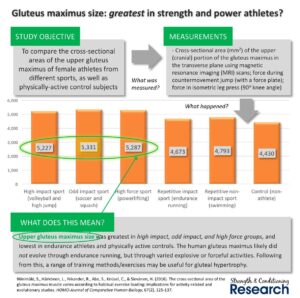GLUTEUS MAXIMUS – TRAINING RESEARCH
Click on Image to Enlarge
RESEARCH
GLUTEUS MAXIMUS-MEDIUS-MINIMUS
– Multiple Exercises
Gluteal Muscle Forces during Hip-Focused Injury Prevention and Rehabilitation Exercises – Collings 2023
Procedure:
– 14 female footballers (18-32 yrs)
– at least 3 months of lower limb strength training experience


